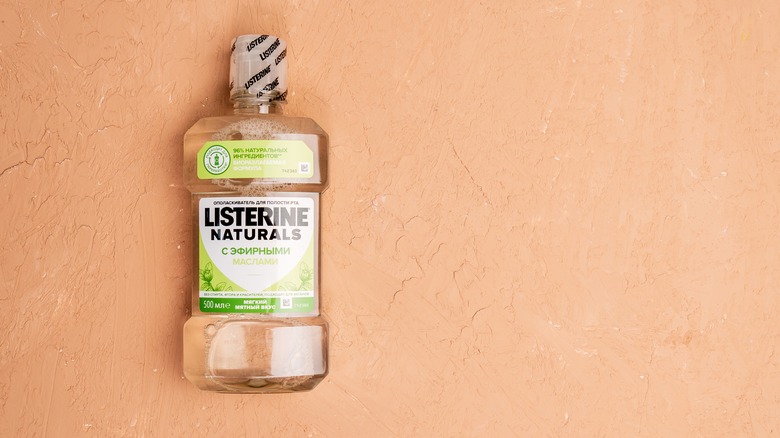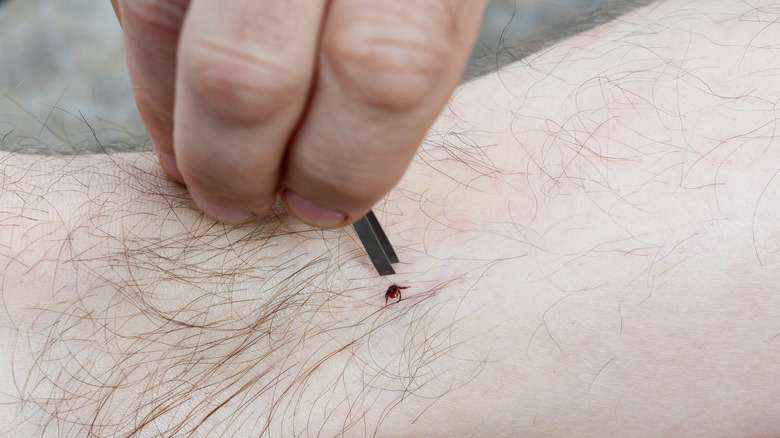Why This Mouthwash Tick Removal Hack Isn't All It's Cracked Up To Be
Tick bites on humans are a big concern, especially when the hotter months roll in. With tick-borne illnesses like Lyme disease, Rocky Mountain Spotted Fever (RMSF), and southern-tick-associated rash illness (STARI) potentially causing serious health concerns, it becomes even more imperative that you find effective ways to safely remove a tick that's latched on to you. While using a tweezer is the most recommended method by health experts, the internet is also abuzz with several other alleged natural tick removal hacks, one of which involves mouthwash.
Apparently, you can suffocate the tick by pressing a cotton ball soaked in Listerine to the skin and this will make the bug draw its head out. However, suffocating the tick with anything, including Vaseline, scotch tape, and nail polish, could actually cause the tick to burrow deeper into your skin in an attempt to get away from the irritating substance. As explained by board-certified pediatrician, Dr. Julie Kardos to Good Housekeeping, "Suffocating a tick is not very effective. Covering a tick with petroleum jelly or nail polish may even cause the tick to become slippery and more difficult to grasp."
You could, however, spray on a mouthwash-based solution when you're outdoors
Preventing tick bites before they even occur might be an even better way to keep yourself free of these pesky bugs and the diseases they bring. According to veterinarian Dr. Mike Hutchinson, per CBS News, an effective home hack for when you're outdoors includes a spray made with nine parts Listerine and one part water. "Spray your dogs' coat and your lower body and the ticks hate the alcohol and will jump right off while you are out there," he explained.
While prevention is the most attractive option, entomologist Robert B. Kimsey, explained to Good Housekeeping that there is no real way to make a tick want to un-latch from your skin once it's on there. And no, lighting a match and scorching the tick isn't recommended by health experts either, for obvious reasons like burning your skin. "Ticks, as an initial process of feeding on you, actually glue themselves in place. The hard ticks that people are most concerned about can't back out of their own volition," Dr. Kimsey told the publication. So you're better off using the tweezer method anyway.
How to safely remove a tick using a tweezer
Get hold of a pair of tweezers and sterilize them with rubbing alcohol before using them to "grasp the tick as close to the skin surface as possible. And you're going to just pull out gently with steady traction and pressure," explained dermatologist Dr. Andrea Suarez, per YouTube. Avoid squeezing, crushing, or twisting. Once you're done with the tick removal, clean your hands and the affected area with rubbing alcohol, per WebMD.
What do you do with the tick after you remove it? The Centers for Disease Control and Prevention (CDC) recommends throwing the insect in a bottle filled with rubbing alcohol or in a plastic bag. You can also opt to simply flush the tick down the toilet or throw it out after wrapping it in tape. Sticking to tick removal hacks recommended by experts will ensure you go about it the right way.



